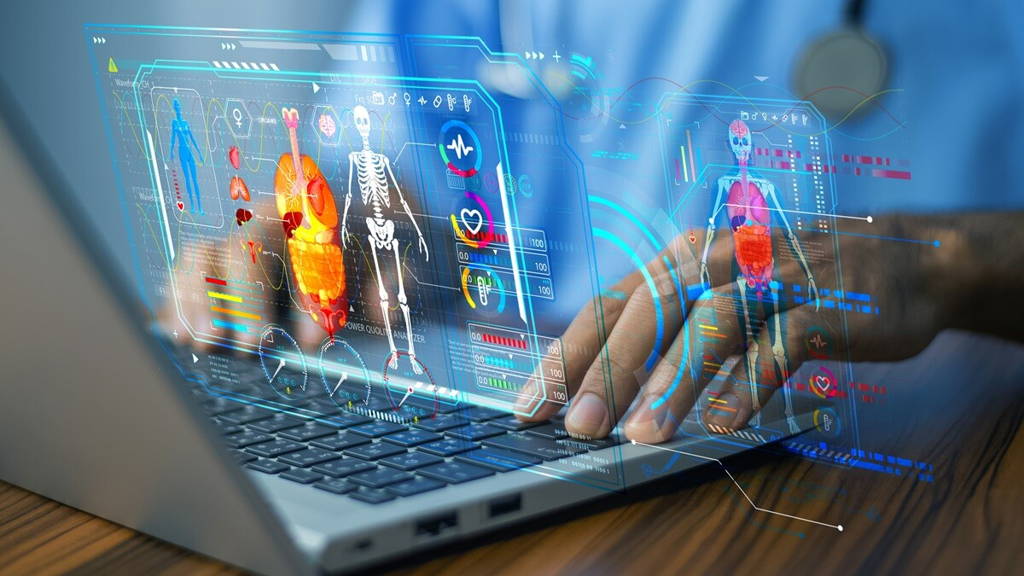Automation and optimization through Artificial Intelligence
Every hospital and clinic faces challenges in hiring medical staff, and there are no signs it should be better in 2024. There are two ways to cope with staff shortages: introducing organizational changes and software that allows managers to automate tasks and increase efficiency or making a workplace exceptionally attractive to employees. The second one is often overseen but can contribute to reducing worker turnover.
Managers are exploring alternative methods to retain and attract employees, such as creating smart hospitals and clinics by adapting modern IT solutions to minimize administrative workload or testing breakthrough innovations delivered by startups. A digitalized and experimental workplace is attractive among young doctors and nurses who value skills development and a modern work environment.
A smart healthcare facility is a facility that also uses business intelligence software to spot organizational bottlenecks and eliminate them to avoid unfriendly workflows.
Telemedicine and hybrid care
Labor shortages are particularly acute in rural areas, and the trend of doctors fleeing to large centers offering modern medical facilities cannot be stopped. Not surprisingly, 2024 is seeing the first signs heralding the return of so-called telemedicine kiosks, and many facilities are looking for opportunities in new forms of care: hybrid care (on-site and on-line), virtual wards, and telemonitoring. New forms of care, however, require a rethink of the existing care procedures: The telemedicine component must be cost-effective and profitable.
Some challenges might be addressed by changing the way things were organized before. For example, in radiology, the "hub-to-spoke" approach – where a central hub supports work in smaller centers – is gaining popularity: the patient is examined on-site, but the doctor consults with a specialist via teleconsultation. Such a model of remote work is nothing new. For example, small laboratories located in medical centers disappeared from the market a few years ago. Instead, electronic systems for transmitting results have emerged, and the doctor can access the results as soon as the test is performed.
Centralization of data and better communication with a patient
Due to interoperability challenges, full access to all patient data is not yet available in many countries. But, medical facilities can do a lot on their own, for example, by integrating IT systems and introducing apps/online portals to enhance communication with their patients and let patients take more responsibility and flexibility. The most basic tools feature appointment management, collecting data, and adding notes to the EHR. Patients can make and cancel appointments from the app, enter symptoms, connect with a doctor for an online consultation, and pay for it. All the data goes into the facility's IT system and must not be manually transcribed.
The development of generative artificial intelligence also promises significant changes in electronic medical records. AI can incorporate even data that couldn't be integrated into the EHR due to lack of interoperability, search for correlations in historical data, and spot worrisome trends based on medical history analysis. IT providers are introducing AI tools to make collecting and analyzing data in EHR easier.
Value of data collected by patients
As of 2022, patients can access another powerful self-diagnosis tool: ChatGPT. Just type in your symptoms, and the generative artificial intelligence will provide a likely diagnosis. And with not a bad result – ChatGPT passes medical exams by answering 80-90% of questions correctly. In 2024, new tools will hit the market, giving patients more insight into their health. In December 2024, Google introduced generative AI fine-tuned for the healthcare industry. OpenAI opened GPT-Store, and we can expect new well-being AI assistants to come up soon.
It's going to be an exciting year for wearables. In September, the Apple Watch – which can already detect atrial fibrillation and perform ECGs, for example – celebrates its 10th birthday. We can expect new health-related functions and sensors. At CES 2024, Withings revealed a new gadget called BeamO for health monitoring at home.
Medical facilities should proactively integrate new technologies into workflows to improve the quality of care. For example, teleconsultation can now be augmented with real-time health parameters measurement and data transfer so that doctors can not only see but also examine a patient.
Back to basics: Digital maturity review
AI in EHRs, generative AI, chatbots for patient care, and Small Data and Big Data analytics – a new generation of software solutions for healthcare facilities is coming to the market. Startups are tempting managers with breakthrough innovations, while IT vendors promise significant benefits and improved workflows by AI-driven new generations of software.
But beware. Before investing in cutting-edge solutions, it makes sense to check whether the foundation of digitalization is sustainable.
Are you digitally so mature that it's time to enter the next level? Does the healthcare facility collect data – beyond the mandatory ones – that can be used to improve patient care? Is the data collected organized and structured? Is there integration between all medical and administrative systems and devices in place? Do you use the data you collect?
Moving to the next level of digital maturity and implementing AI-based solutions requires a review of the performance of already implemented solutions (EHR, apps, analytics tools, etc.) and redesigning workflows. Besides, implementing AI solutions based on gen AI is still a major challenge even for the largest clinics with the right human and financial resources.







